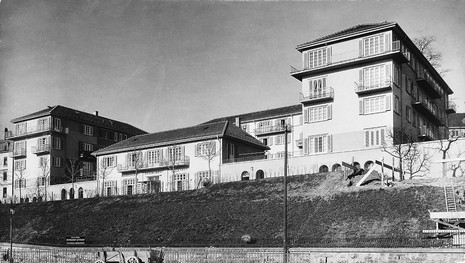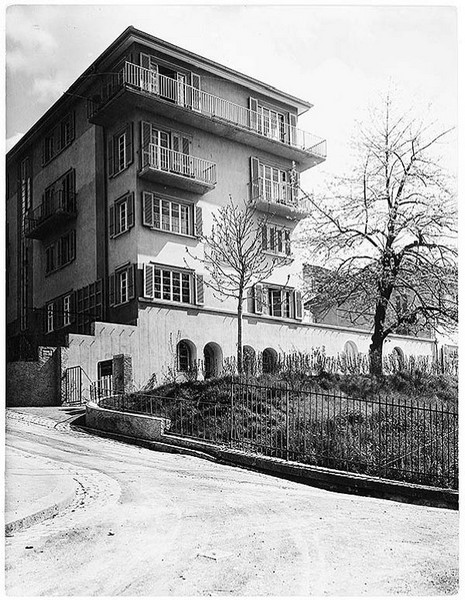Description
Relatively early in the development of the housing model of Men’s and Women’s Hostels and Boarding Houses, a bourgeois-oriented women’s movement in Zurich conceptualized the Lettenhof Women’s Colony, realized in 1927 by architect Lux Guyer. Two cooperatives and a foundation provided funding for the building: the Baugenossenschaft berufstätiger Frauen (Working Women’s Building Cooperative), the Baugenossenschaft Lettenhof (Lettenhof Building Cooperative), and the Wohnstiftung Imfeldsteig für alleinstehende Frauen (Imfeldsteig Housing Endowment for Single Women). Financing of the project was made possible thanks to the City of Zurich’s proactive property policy, which in 1924 made it possible for non-profit housing developers to receive a loan from the city in the form of a second mortgage.
Lux Guyer, one of the first women to practice architecture in Switzerland, designed the Lettenhof as a complex with four buildings grouped around a courtyard. There were three residential buildings, one for each of the developers, providing a total of 6 three-room apartments, 23 two-room apartments, and 22 one-room apartments for around 60 residents.[1] The first residents ranged between 20 and 80 years of age.[2] Some of the apartments had private bathrooms, while one-room apartments had a small private washing area, plus a shared bathroom. Depending on the number of rooms, each apartment had either a cupboard kitchen or a normal kitchen. There were also additional tea kitchens in the hallways. The minimalistic apartments were spatially well organized and brought considerable added value for the single women, who could live independently in the housing colony and take care of their spaces with very little time and effort.[3]
Complementing the three main buildings that contained residences, a fourth building housed a publicly accessible, alcohol-free restaurant. When not cooking at home, residents could either eat in the restaurant or order a meal delivery to their apartment. Above all, the restaurant fulfilled the purpose of providing social contact and communication for residents of the surrounding neighborhood. At the time, it was seen as immoral for women to eat alone in a public restaurant. A caretaker couple supervised the general order and would arrange additional services such as washing and cleaning for an additional fee.[4] While the majority of residents were single women who had never been married, widowed and divorced women also lived at Lettenhof.
The women’s colony is still largely preserved in its original form today, although the internal structure has been adapted over time by merging one-room apartments and converting the restaurant premises into lofts. In addition, all apartments have been equipped with personal bathrooms.[5] According to the Working Women’s Building Cooperative, the apartments are still rented predominantly by single working women today.
 View from Letten Station with alcohol-free restaurant at the center
View from Letten Station with alcohol-free restaurant at the center
 Single Women building from Wasserwerkstrasse
Single Women building from Wasserwerkstrasse
Footnotes
Claus, Huber, Schnitter (2013): Lux Guyer 1894– 1955, Architektin, p. 78.
Fankhauser (1991): Ein Volk ist weitgehend das, was seine Wohnungen sind, Die selbständige berufstätige Frau und ihre Wohnsituation, p. 38.
Ibid., p. 23 f.
Rudolf (1928): “Wohnkolonie für alleinstehende Frauen im Lettenhof Zürich.” In Werk (15|1928), p. 145.
Claus, Huber, Schnitter (2013): Lux Guyer 1894–1955, Architektin, p. 181.
Originally published in: Susanne Schmid, Dietmar Eberle, Margrit Hugentobler (eds.), A History of Collective Living. Forms of Shared Housing, Birkhäuser, 2019. Translation by Word Up!, LLC, edited for Building Types Online.